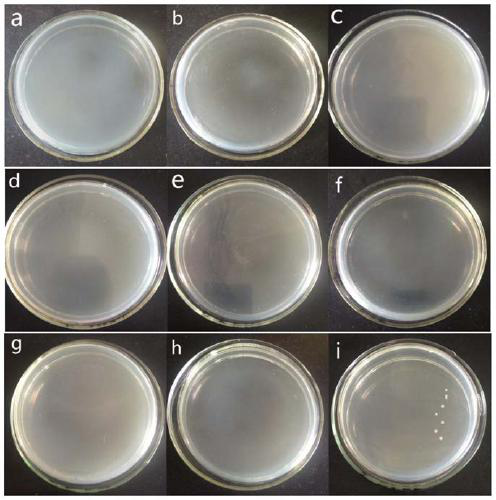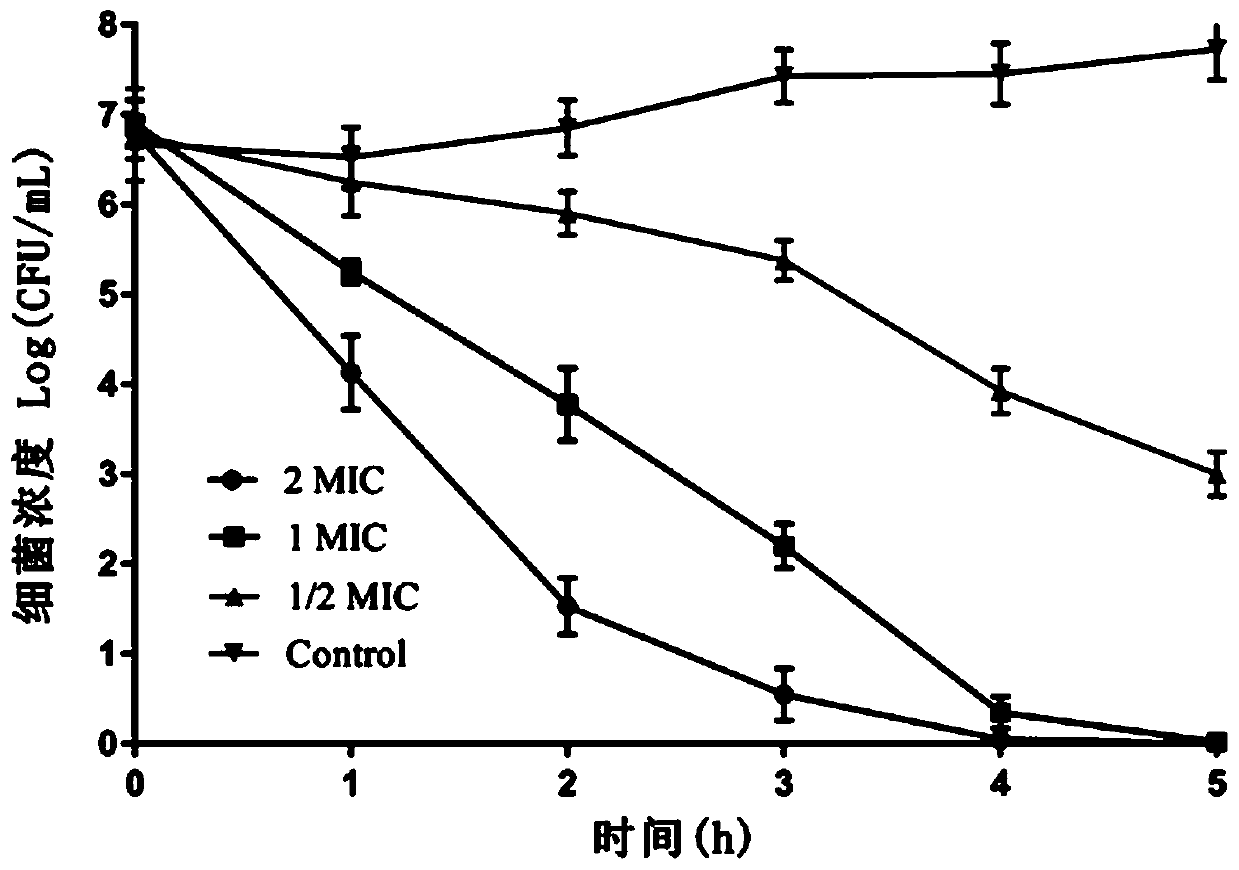Application of Tegillarca granosa hemoglobin antimicrobial peptide in food preservation and fresh-keeping
A hemoglobin and food antiseptic technology, applied in the field of food microorganisms, can solve the problems of unsatisfactory antibacterial effect and achieve good growth effect
- Summary
- Abstract
- Description
- Claims
- Application Information
AI Technical Summary
Problems solved by technology
Method used
Image
Examples
Embodiment 1
[0028] Example 1 Screening of clam hemoglobin-derived antimicrobial peptides
[0029] The hemoglobin sequence of cockles consists of 152 amino acids:
[0030] Because the cell membrane of bacteria is negatively charged, negatively charged amino acids are not conducive to the antibacterial activity of peptides, and there are more negatively charged regions in the hemoglobin sequence of mud cockles, only three regions (sequence number 22-39, sequence number 59-81, sequence number 92-109) are less negatively charged. TWEMVSGKKKNGVVLMIK has a net positive charge of +3.
[0031] Lysamino (K) has the function of stabilizing the secondary structure of the polypeptide, and the secondary structure can ensure the realization of the antibacterial effect of the polypeptide. In the hemoglobin sequence of the clam, only the fragment with sequence number 22-39 has 4 lysines (K), while the two fragments with sequence numbers 59-81 and 92-109 have 1 and 3 lysines (K) respectively. 2.
[00...
Embodiment 2
[0034] Embodiment 2 Minimum Inhibitory Concentration (MIC) Determination
[0035] Cultivate Listeria monocytogenes at 37°C for 12h to logarithmic growth phase, dilute to 10 in 0.01M pH 7.2 phosphate buffer 6 CFU / mL. The antimicrobial peptide TGH1 of Example 1 was dissolved in phosphate buffer, and mixed with Listeria monocytogenes in equal volume at 37° C. for 2 hours. The minimum inhibitory concentration (MIC) is the lowest concentration of an antimicrobial peptide at which no bacterial growth is visible from the microtiter plate after overnight incubation at 37°C. The results showed that the minimum inhibitory concentration (MIC) of the antimicrobial peptide TGH1 to Listeria monocytogenes was 15.6 μg / mL, as figure 1 shown. The antimicrobial peptide TGH1 has an MIC greater than 1000 μg / mL to Escherichia coli, greater than 1000 μg / mL to Streptococcus B, and greater than 1000 μg / mL to Staphylococcus aureus. The antimicrobial peptide TGH1 has a very strong inhibitory effect ...
Embodiment 3
[0036] Example 3 Antimicrobial Peptide TGH1 Time and Lethal Relationship Analysis
[0037] The time-killing kinetics of antimicrobial peptides was assessed by plate counting. Adjust the cultured Listeria monocytogenes to approximately 10 6 CFU / mL concentration, exposed to different concentrations of antimicrobial peptide TGH1, then incubated at 37°C for 5h, and observed the number of residual bacteria at 0, 1, 2, 3, 4, and 5 hours, respectively. The indicator strain cultured in phosphate buffer (0.01M, pH 7.2) was used as negative control.
[0038] combine figure 2 , where, a: sterile water; b: 0.5mg / mL ampicillin; c: 1.0mg / mL antimicrobial peptide TGH1; d: 0.5mg / mL antimicrobial peptide TGH1; e: 0.25mg / mL antimicrobial peptide TGH1; f: 0.125 mg / mL antimicrobial peptide TGH1; g: 62.5 μg / mL antimicrobial peptide TGH1; h: 31.25 μg / mL antimicrobial peptide TGH1; i: 15.6 μg / mL antimicrobial peptide TGH1. It can also be seen from the time-kill curve that the number of bacteria...
PUM
 Login to View More
Login to View More Abstract
Description
Claims
Application Information
 Login to View More
Login to View More - R&D
- Intellectual Property
- Life Sciences
- Materials
- Tech Scout
- Unparalleled Data Quality
- Higher Quality Content
- 60% Fewer Hallucinations
Browse by: Latest US Patents, China's latest patents, Technical Efficacy Thesaurus, Application Domain, Technology Topic, Popular Technical Reports.
© 2025 PatSnap. All rights reserved.Legal|Privacy policy|Modern Slavery Act Transparency Statement|Sitemap|About US| Contact US: help@patsnap.com



